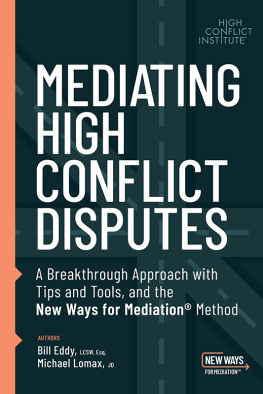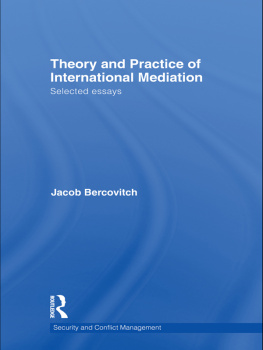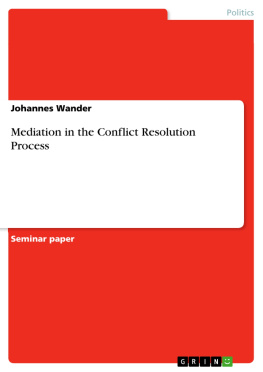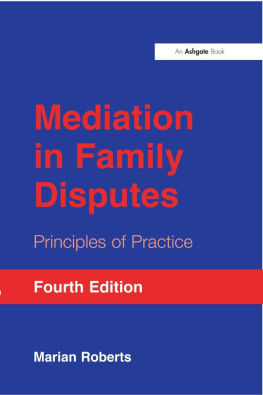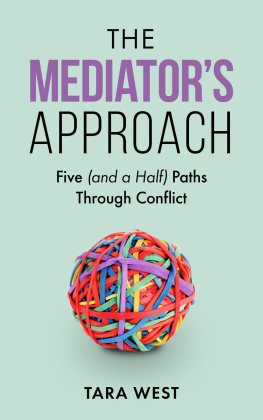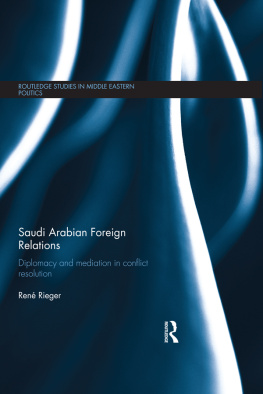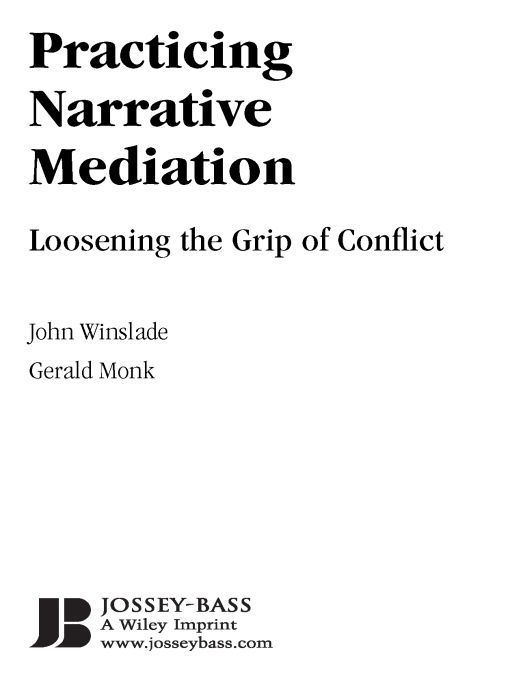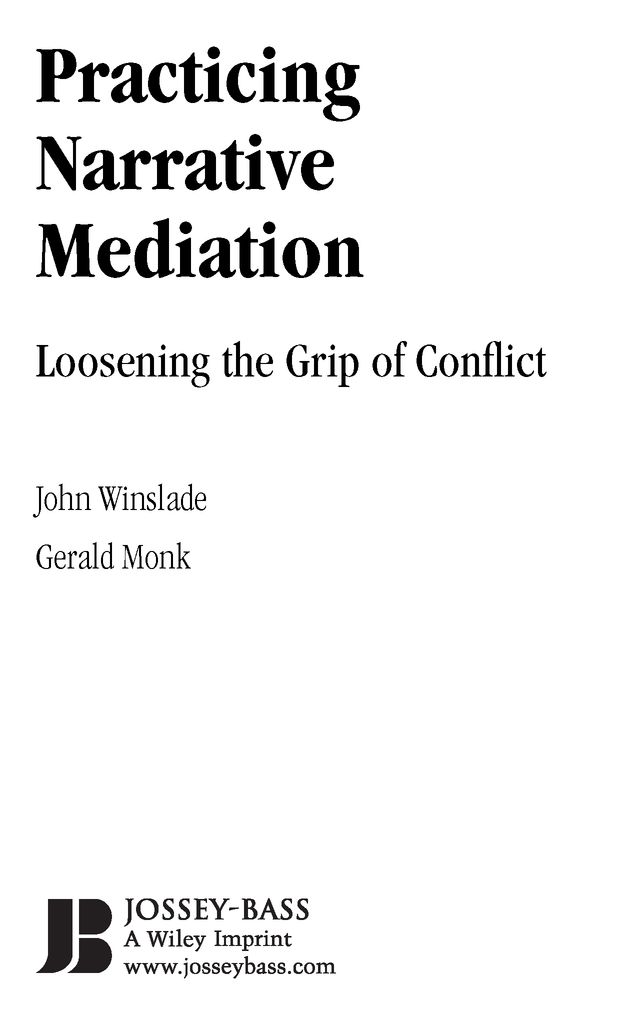Table of Contents
For Michael White
(1948-2008)
In appreciation for his incalculable contributions to the
development of narrative practice
Preface
In 2000, we published Narrative Mediation: A New Approach to Conflict Resolution. This new book began with the idea that we might update that text. However, as we discussed with Jossey-Bass the idea of a second edition containing a number of revisions and also new concepts growing out of our experience over the last seven years, it rapidly became clear that we were talking about more than a few changes and additions. The idea of preparing a completely new text was the logical result. This book is the result of that decision.
This book covers new ground in several directions. One direction has led us to examine the development that has been taking place in narrative practice in general in the last ten years. In particular, we have drawn from the wide field of practice of narrative family therapy and community work. In addition, a growing number of practitioners have taken up the practice of narrative mediation, and we have sought to represent that growth through inviting some of these practitioners to participate in writing this book. Finally, we have considered the development that has occurred in our own work through the teaching and practice we have undertaken in the last ten years.
When we wrote our 2000 book, we were both living in New Zealand and had been doing mediation primarily in family and organizational contexts. Since 2000, we have both, at different times, relocated to California and widened our familiar domains of practice. Many of the developments recorded here derive from the widening of our contexts of reference for the practices discussed.
We have also taught conflict resolution practice to students in a number of different universities: the University of Waikato in New Zealand; San Diego State University, California State University-San Bernardino, and California State University-Dominguez Hills in the United States; and the Conrad Grebel University College at the University of Waterloo in Canada. In addition to teaching these formal courses, between us we have taught workshops at many sites in many countries: New Zealand, the United States, Australia, Canada, the United Kingdom, the Netherlands, Austria, Denmark, Sweden, Cyprus, Russia, and Israel. The more we teach about narrative mediation, the more we explore the ideas involved and learn from the responses of workshop participants, who ask questions, probe our assumptions, query cultural leanings, get excited about different aspects of this approach, and often apply concepts in different arenas of practice. All this is both gratifying and stimulating. It also works on us to develop our own understanding of what narrative mediation is about. In pursuit of constant improvement in the clarity of our teaching, we have designed new teaching tools and exercises, and the practice has changed in our own minds along the way. To us it has seemed to become simpler and clearer, and we hope that is the experience of workshop participants.
In the general field of narrative practice, the work of Michael White and David Epston continues to be important, and there are many others who have thrown their lot in with the narrative movement and contributed to what is now a robust and growing literature. In this book Michael Whites notions of the absent but implicit (discussed in Chapter One), double listening (Chapter One), and outsider-witness practices (Chapter Six) are examples of concepts that we have drawn from new developments in narrative family therapy work.
From the work of Bronwyn Davies and Rom Harr, among others, we have featured the notion of working with discursive positioning, which was mentioned in our 2000 book but not with the same degree of elaboration as here. Johns own work on a thesis for his PhD degree (completed in 2003) applied the idea of discursive positioning to mediation practice. Some of his thinking has been published in article form and now this book draws more extensively on his work. Our book is also indebted particularly to the collaboration of Wendy Drewery and her inspiration and theoretical groundwork. She was also the chief supervisor for Johns PhD degree study at the University of Waikato. John is also grateful to Terry Locke for his perceptive support and careful attention to Johns work on the PhD degree project.
In our earlier book we made particular use of the poststructuralist theorizing of Michel Foucault. Much more of Foucaults work has been translated into English since then, particularly his later emphasis on the technologies of the self and the concept of governmentality, and this book has benefited as a result.
Now let us look at this book chapter by chapter. In Chapter One we have fashioned a restatement of the whole idea of narrative mediation. Chapters Two and Three then explore in some depth the leverage that can be gained from applying the concept of discursive positioning. In Chapter Four we focus on culture and mediation, taking a constructionist approach to thinking about culture. This chapter is influenced by the work we did in writing a textbook (published by Sage) on cultural issues in the counseling field. In the second half of the book we explore the penetration of these ideas into a range of practice contexts. The intention is to show how conflict resolution work in different contexts can take on a narrative spirit.
Since moving to the United States, one new domain of practice is collaborative divorce, which we discuss in Chapter Five. We have now taught several workshops on this subject in California and in Canada. We would especially like to thank Peggy Thompson for inviting us to introduce narrative mediation ideas into the collaborative divorce movement. Peggy has been a staunch supporter of narrative perspectives and has had the vision to see the strong connection between the underpinnings of narrative practice and collaborative divorce. Gerald, especially, has become connected with this movement and has worked as a coach in the collaborative divorce model. We are grateful for the enthusiasm with which those responsible for starting this invigorating new set of conflict resolution practices have welcomed the ideas we have been exploring. It was Geralds connection with Chip Rose that led to Chips contribution to Chapter Five. Chip is a highly experienced family law attorney, mediator, and trainer in collaborative divorce, and we were pleased to include his creative and helpful contributions. It is especially good to be able to add to our psychological perspective the perspective of a lawyer who appreciates the aims of narrative mediation.
For four years John has been a regular visitor to Denmark at the invitation of the DISPUK organization. The DISPUK community of psychologists and organizational consultants offers professional development programs in family therapy and organizational development and management, and teaching to DISPUK course participants working in a second language has given John a new appreciation for the clear articulation of ideas. DISPUK director Allan Holmgren has been a champion of narrative and social constructionist practice. His work with organizations and managers led John to ask him to join in coauthoring Chapter Six, on narrative practice in organizational conflicts. Allan is indebted to Australian therapist Michael White, whom he regards as his close friend and ally and without whom the work presented here couldnt be done.


